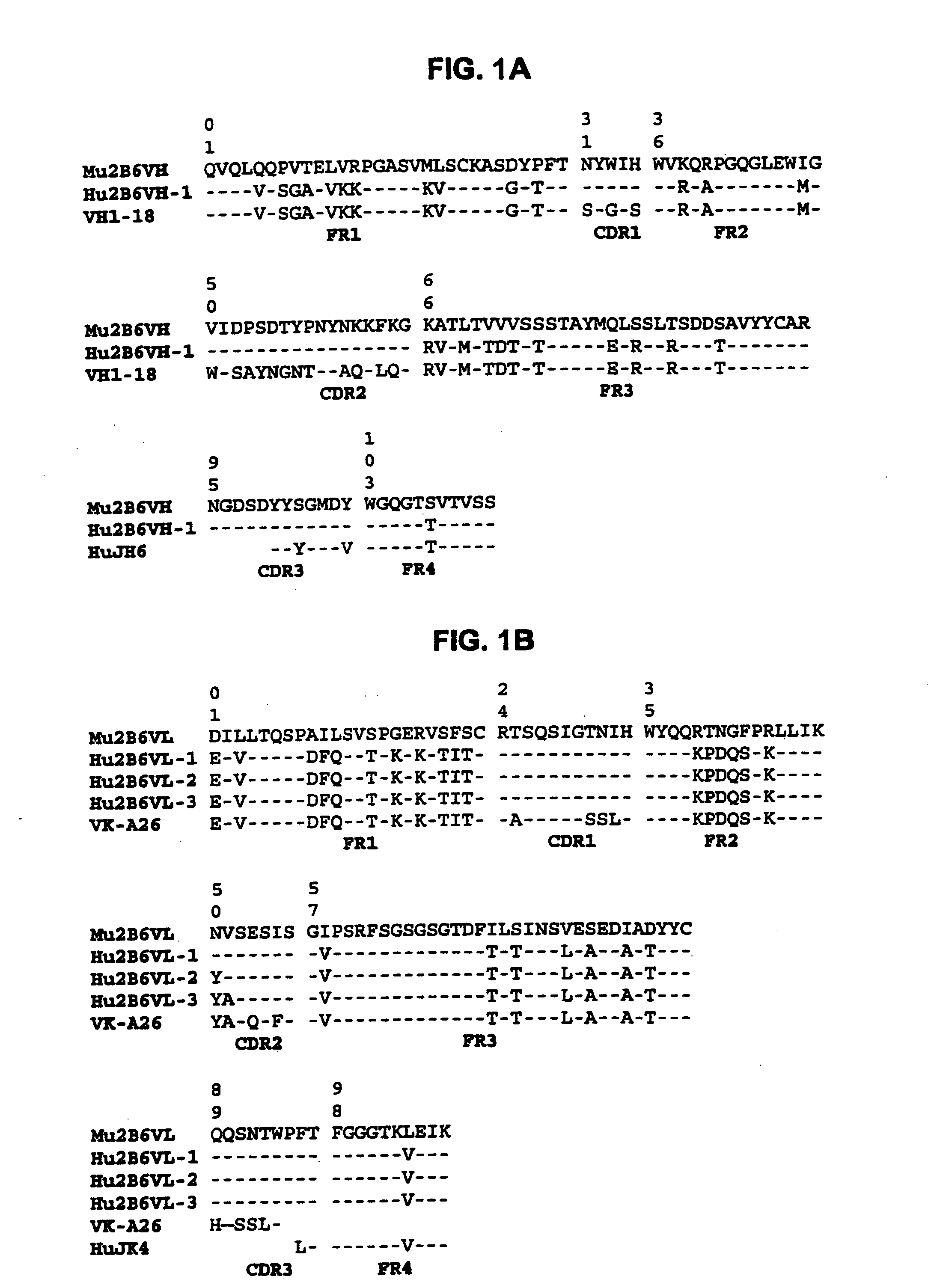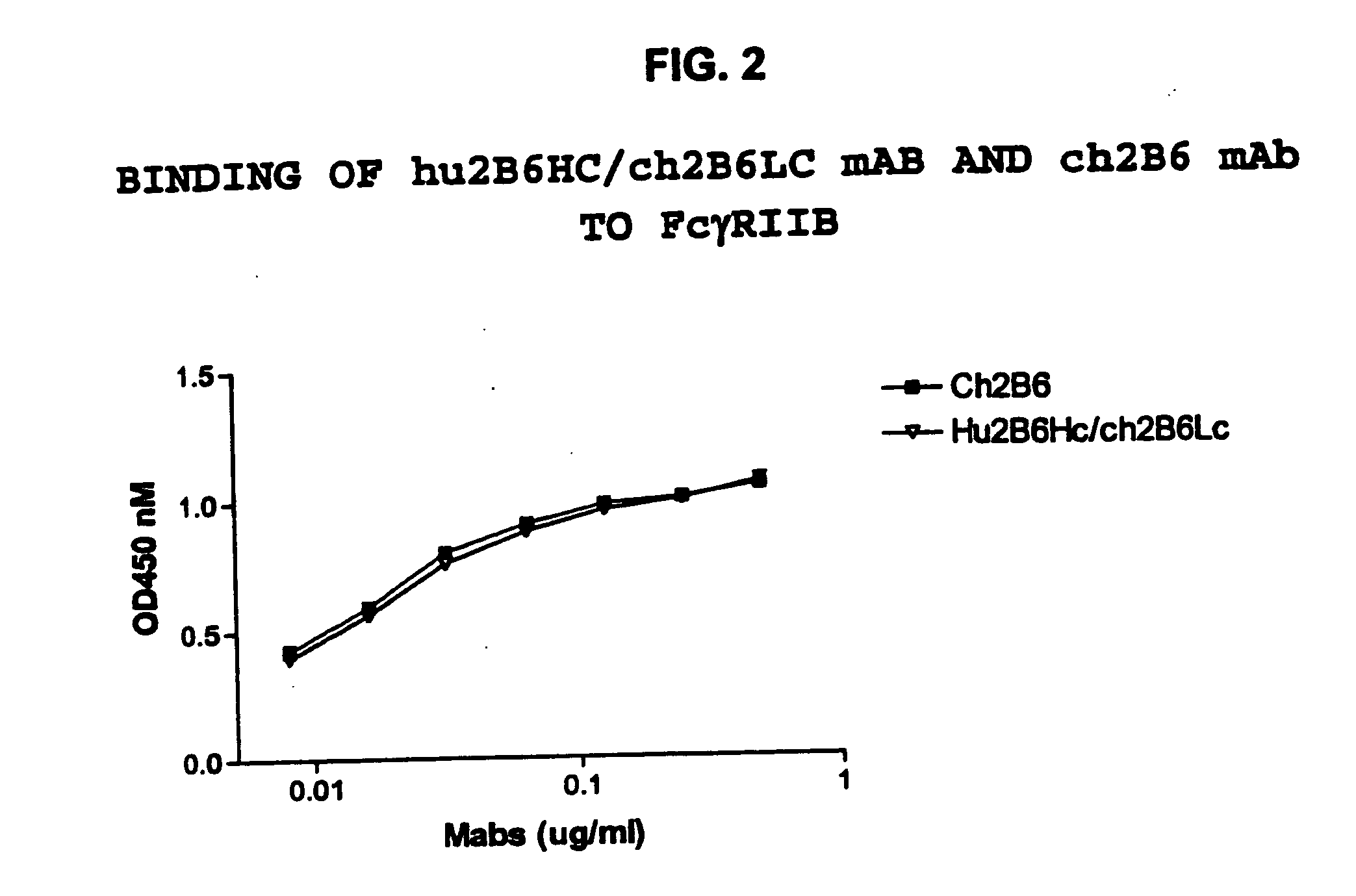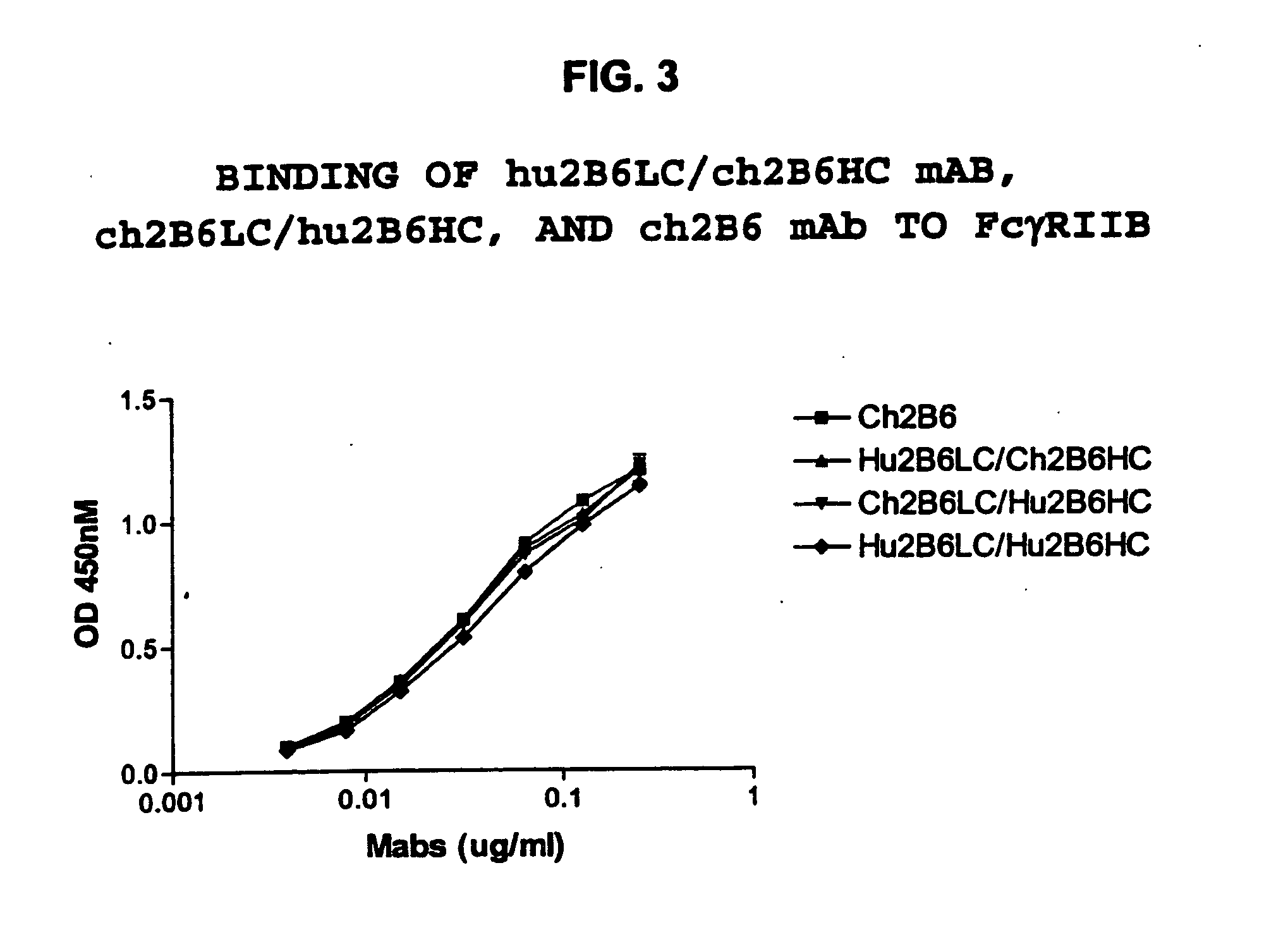Humanized FcgammaRIIB-specific antibodies and methods of use thereof
a technology of fcgammariib and specific antibodies, which is applied in the field of humanized fcriib antibodies, can solve the problems of reducing the therapeutic effect of another therapy, and reducing the therapeutic effect of antibody, so as to reduce the spread of cancer, prolong the therapeutic effect of another therapy, and delay or minimize the onset of diseas
- Summary
- Abstract
- Description
- Claims
- Application Information
AI Technical Summary
Benefits of technology
Problems solved by technology
Method used
Image
Examples
experiment 1
[0402] The hu2B6 heavy chain (HC) expression plasmid was co-transfected together with ch2B6 light chain (LC) into HEK-293 cells. At the same time, the ch2B6HC was co-transfected with the ch2B6LC. After three days in culture the amount of human IgG expressed was quantitated by ELISA. Binding to dimeric soluble FcγRIIb-Fc was then determined by ELISA assay.
[0403] Protocal for ELISA assay: 2.5 ng / well of soluble FcγRIIb-Fc was captured on 96-well Maxisorp plates by mouse anti-FcγRIIb antibody 3H7 at room temperature for 1 hour. A serial of two-fold dilution of conditioned medium of ch2B6 or hu2B6Hc / Ch2B6Lc starting from 25 ng / well was added to the each well. The plate was incubated at room temperature for 1 hour, then binding was detected by HRP conjugated F(ab′)2 goat anti human IgG F(ab)′2 specific secondary antibody. After incubation with the secondary antibody for approximately 45 minutes, the plate was developed using a TMB substrate. After 5 minutes incubation, the reaction was ...
experiment 2
[0408] Transfections of HEK-293 cells were performed using the following combinations: hu2B6HC / hu2B6LC, hu2B6HC / ch2B6LC, ch2B6HC / hu2B6LC and ch2B6HC / ch2B6LC. After three days in culture the amount of human IgG expressed was quantitated by ELISA using the protocol described above. Binding to dimeric soluble FcγRIIb-Fc was then determined by ELISA. The results of this experiment, depicted in FIG. 3, indicated that all of the mAbs bound to the receptor with similar affinity. FACS analysis was then performed using the protocol described above to measure the binding of the mAbs to Daudi cells (Table 7). The results indicate that hu2B6HC / hu2B6LC mAb binds to this human B cell tumor line with the same affinity as the ch2B6 mAb.
TABLE 7Primary AntibodyConcentration (ug / ml)Mean FluorescenceHuman IgG10.5 6.070.1N / A0.02N / ACh2B60.5551.520.1514.690.02168.17Hu2B60.5628.820.1618.130.02228.74
[0409] 6.3 Generation, Expression and Binding of hu2B6LC Variants.
[0410] There is a consensus sequence of N...
PUM
| Property | Measurement | Unit |
|---|---|---|
| half life | aaaaa | aaaaa |
| half life | aaaaa | aaaaa |
| half life | aaaaa | aaaaa |
Abstract
Description
Claims
Application Information
 Login to View More
Login to View More - R&D
- Intellectual Property
- Life Sciences
- Materials
- Tech Scout
- Unparalleled Data Quality
- Higher Quality Content
- 60% Fewer Hallucinations
Browse by: Latest US Patents, China's latest patents, Technical Efficacy Thesaurus, Application Domain, Technology Topic, Popular Technical Reports.
© 2025 PatSnap. All rights reserved.Legal|Privacy policy|Modern Slavery Act Transparency Statement|Sitemap|About US| Contact US: help@patsnap.com



